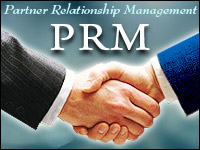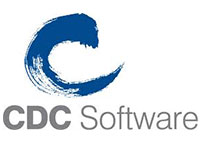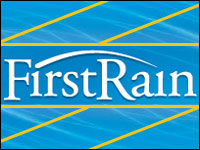
Some think of it as just an offshoot of CRM. Others view PRM, or partner relationship management, as interchangeable with sales force automation. The reality is PRM is coming of age in its own right, as manufacturers and technology companies struggle to manage their highly complex — and constantly shifting — channel partnerships.
“Anytime there is an economic downturn, enterprises start looking at their channel relationships more carefully, Michael Fauscette, group VP of software business solutions for IDC, told CRM Buyer. “They want to increase opportunities to use their channels, get more out of the marketing dollars spent, and determine who is the most productive.”
It’s not easy to find specific numbers on PRM adoption.
“We don’t break down PRM as a separate application,” William Band, vice president and principal analyst of business process and applications at Forrester, told CRM Buyer.
It appears that in Forrester circles, PRM is grouped with sales force automation under the bigger CRM umbrella.
CRM software licenses are a US$12 billion market worldwide, with sales force automation accounting for approximately 30 to 40 percent of that, according to Forrester. Within the sales force automation category itself, PRM could acount for one-third to one-half of the total, Band estimated.
Leading contenders in the space include Oracle Siebel, Salesforce.com, SAP, CSG Openline (Blueroad) and Click Commerce.
Different Kettles of Fish
While one might think they all belong in the same pot, time is proving that PRM is a distinct entity.
“PRM is different from sales force automation. Whereas one is designed to help direct sales organizations, the other helps sales organizations that use outside sales [partners],” Band explained.
“In addition to providing sales functionality for salespersons — such as contacts and pipelines — PRM also helps a brand owner to recruit partners, manage training and marketing activities, and [handle] payment of channel promotional dollars,” he said.
“From a system perspective, PRM is very, very different from CRM,” Fauscette confirmed. “It’s just a matter of convenience to put it another category because we don’t know what to do with it.”
Changing Times
Recent market changes have led many to look at PRM in its own right more closely in their strategic planning, Band added.
“The economy, combined with the availability of SaaS models and the recognition that there is a lot of waste in channel management, has led to a strong resurgence of interest in the category. Because distribution channels for technology software companies are becoming more complex, a lot are re-looking at those channels.”
The current period of consolidation is having an impact throughout the channel.
“We’re going to continue to see that,” Fauscette added, “so managing those relationships and getting information is becoming even more important as the landscape changes.”
When it comes to PRM, “there’s been an evolution from companies taking a siloed approach to achieve a quick win, to companies taking an integrated process to achieve long-term strategic value,” noted Caroline Kohout, director of CRM product marketing for SAP.
“As organizations mature, they want to enable their partners to check availability online, get smarter at pricing and deal negotiations, and better match supply and demand. As the ecosystem grows, they also want to orchestrate their business networks to be more responsive and act in synchronization,” Kohout told CRM Buyer.
These are just some of the reasons the industry is seeing more and more differentiation in the way PRM is being applied, Fauscette said. “It’s a channel management tool more than anything — but we’re seeing some evolution in deeper capabilities and more SaaS [options].”
Added Depth
While the new face of PRM is something that has been in the works for some time, it was the emergence of SaaS and portals that changed the game, observed David Auld, president of ChannelAssist.
“Historically, there has been limited uptake of PRM because it was a limited product. Manufacturers didn’t have portals for their partners, so the software was a bit of a stretch,” Auld told CRM Buyer. “But SaaS offerings have lowered the barrier to entry, and the recession seems to have brought the interest [in PRM] to a sharp point.”
The cost to support dealers these days is high — and the interest in strategies to deal with that problem is even higher.
“How do you cover 300 partners and support them, and understand their business, and figure out how to get more business out of them?” Auld asked.
“Every year company sales quotas increase. So they are asking themselves, how do we increase sales without expanding our partner base? And if we lose a large selling partner, how do we replace that revenue?” he continued.
“A recent study suggested while 46 percent of vendors have sponsored programs or other activities designed to increase partner loyalty, few … said they have the ability to measure the results of their programs and how they impact customer loyalty,” Auld added. “This gap clearly indicates that PRM has a role to play in a channel management strategy.”
New Thinking
HP has been leveraging PRM platform services from ChannelAssist for a few years now.
“We use it to manage the loyalty programs rolled out to thousands of our commercial and enterprise resellers and sales reps,” Roseann Genovese, channel program manager, told CRM Buyer. “It allows us to communicate on a one-to-one basis with everyone, offer training, and facilitate financial decisions based on rewards earned.”
What PRM gives HP is the ability to gather more information that it couldn’t put its hands on before, she added.
“Before, we had a reseller program that rewarded partners for what they did — that is, sales numbers — but we never looked at what they in turn did for the customer,” she explained. “It’s also helped immensely with the costs, because we can use it for online training based on [identified] need. That’s a big leverage point, because getting the right training to the right people helps increase sales.”
Tying It All Together
When it comes to PRM today, what’s needed is an integrated platform approach that can grow as a company’s business needs grow, Kohout contended.
Social networking will play an important role in PRM going forward, she maintained.
“There is a need to find innovative ways to engage and enrich the customer and partner experience through social media interactions while leveraging the core strengths of PRM,” said Kohout. Collaboration via social networks is a transformational driver behind the ‘new generation’ PRM.”
SAP’s community network is an example of a community that has more than 1.5 million members and provides a rich collaboration platform for partners, vendors and customers, she noted.
“Many companies have mastered traditional PRM 1.0 usage where they have a good view and understanding of their partners and customers from a transactional standpoint,” Kohout pointed out. “The combination of traditional PRM with the social Web is how we see PRM 2.0.”























































